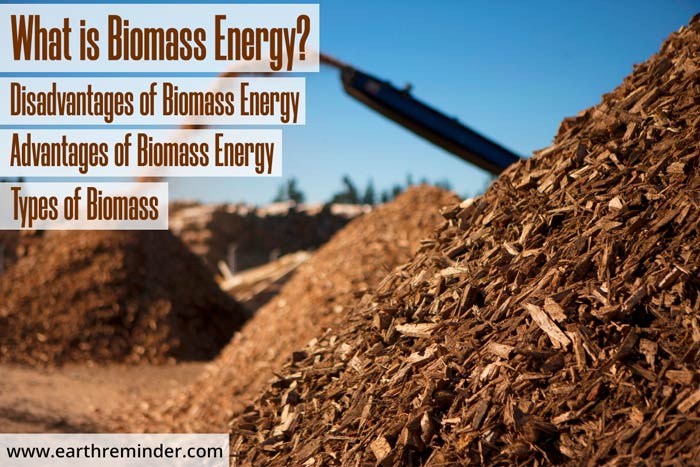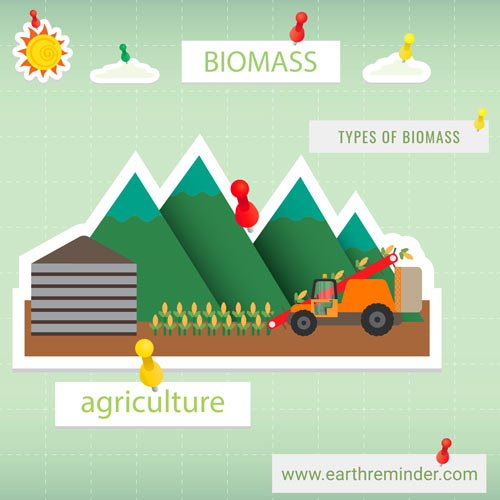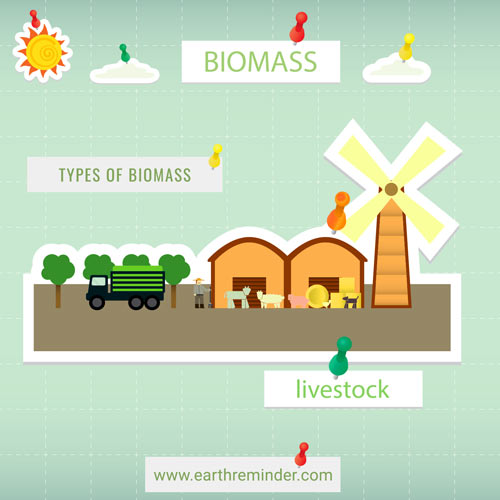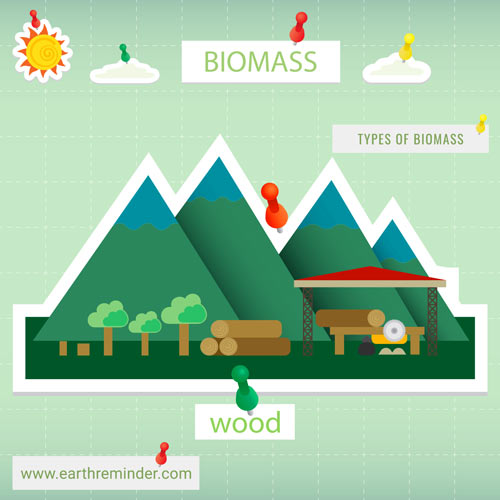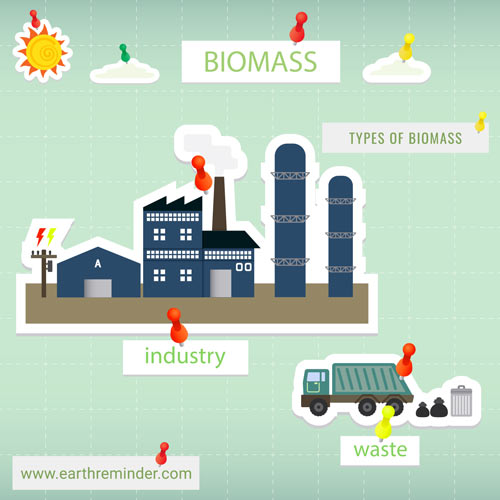What is Biomass Energy? Types, Advantages and Disadvantages
Biomass energy, also known as bioenergy, becomes so popular nowadays, as it supplies the most valuable entity that we demand in our daily life. The energy produced from the Biomass is a renewable source, that means it can be generated in the future. Therefore, by analyzing the advantages and disadvantages of biomass energy, we can apply this to our future to produce lots of goods and also to save our mother nature from hazards.
Hence, in this article, we’re going to discuss the essential factors you should know, before starting your research on biomass energy.
Table of Contents
What is Meant By Biomass Energy?
So, the first question that arises to our mind is what is biomass energy and what are the examples of it. “It is the energy produced from the Biomass”. Now “what is biomass”? Well, the answer is straightforward and remains in its name, i.e., Bio means living and mass means product.
Thus, in easier words, we can say, Biomass is the product derived from the living organisms primarily from plants. Some basic examples of Biomass are woodchips, forest debris, certain crops like rice or sugarcane, even dung and also the domestic organic wastes.
Indirectly, the sun produces energy. This is because plants are utilizing sunlight to provide the nutrients (carbs) by fixing CO2 and water through the process of photosynthesis. And that starch remains stored in the plants as a reserve food material which by further processing gives us energy. That means, the power taken by the sun to produce food, come back to us by this method.
Although the Biomass is used from the time of cave-man for making food and generating heat, still, that was not familiar with the name biomass and is officially used for energy in 1975. Hence, the history of Biomass is relatively recent, and it started with the sugarcane mills in the Caribbean islands.
With advanced technology, the use of Biomass has been on the rise and for a good reason. This form of energy has been used in manufacturing products such as candles, paper, clothing, and other household goods. People have been able to utilize the energy from the wood to produce electricity, heat, and other powers as well. Still, there are some disadvantages of biomass energy; we should be concerned about, which we will discuss in this article.
Why Biomass Energy is a Renewable Source?
The term renewable means – can be produced again. In those ways biomass energy will be available in future, due to the following reasons:
- It is derived from the waste materials, which is always available.
- We can grow more plants whenever we want.
Types of Biomass
Although the examples we described briefly above are the types of Biomass, but if we broadly categorize them, then we will get six significant types of Biomass; explained below:
Agricultural and Forestry Crop Residues
Agricultural and forestry crop residues are those we get from the farm field and forests. These are all plant residues like straw, residues from fruit processing like husk, stones, cane trash, Stover; forest residues like logging residues, imperfect commercial trees, dead wood, and other non-commercial plants that must be thinned from damaging overcrowded forests.
Energy Crops
Energy crops are those which are grown for the production of energy and increases the fuel value. Some examples of energy crop scheme are Short Rotation Coppice (SRC) and Miscanthus.
Animal Wastes
Animal Wastes are the residues that come from animal farming like cattle farm, pig farm, poultry farm and even slaughterhouse and fishery. These wastes are such as; dung, chicken droppings, swine manure, and other organic debris from slaughterhouse and fisheries.
Residues From Woodlands
Some remaining products from woodlands are woodchips, wood pellets and logs. We use them highly for energy production.
The Municipal and Industrial Waste
Municipal solid waste and sewage are the domestic sewages, food garbage, vegetable oil residues and other similar things that are primarily used for producing composts or electricity.
From various industries, some other trash for instance; black liquor from paper and textile industries, solid wastes like fruits and vegetable peelings, coffee grounds, pulp and fiber from starch and sugar extraction, and filter sludge’s and liquid wastes like meat, fruits and vegetable washes water, pre-cooked fish, poultry and meat, from food industries and wood garbage from construction industries, are a great source of Biomass generally disposed of in landfill dumps or biogas plants.
So, these are the types of wastes or Biomass used for the production of energy. The technical term for Biomass is feedstock.
How Does Biomass Energy Work?
Biomass energy is the energy stored in the Biomass, which by further processing can be utilized in various types of conversions like biochemical, electrochemical, or just thermal. Hence, differently, we can ask “how is biomass energy used for multiple purposes or what are the applications of it?” Therefore, here we are discussing the mechanisms of usage of Biomass for generating bioenergy.
For Generating Heat:
Generation of heat by using Biomass is quite similar to the production of heat through fossil fuels, but the only difference is the source. Fossil fuels are non-renewable resources we had been using from millions of years, and thus Biomass is the perfect alternative of it.
The process of heat generation is through the combustion of the Biomass or wastes, but still, there is a chance of environment pollution.
For Generating Electricity:
From Biomass, electricity can quickly produce and in various ways. We can directly burn those wastes for heating water to generate steam, and by this steam using a turbine, we can smoothly generate electricity.
In other ways, we can use dry agricultural wastes in high temperature and anaerobic condition inside a gasifier. This can produce synthesis gases like carbon dioxide (CO2) and hydrogen(H2). The process is termed as pyrolysis. Also, by using wet organic excrement like manure or food garbage, we can generate methane (CH4)(biogas) in a digestion tank.
Both methods come under gasification and by using either synthetic gas or biogas in a gas turbine, or Fuel cell can generate electricity.
For Generating Biofuel:
Biofuel is another sustainable energy source, produced industrially by biochemical conversion to reduce the use of natural fuels for energy demand in transport as well as other sectors.
The most well-known biofuels are ethanol and biodiesel. Ethanol is produced by fermentation process in which Biomass such as sugarcane and molasses are converted into sugar through microbes like yeasts, and they are further transformed into a large amount of ethanol.
Similarly, from vegetable oils, palm oils or seed oils, we can produce biodiesel by reacting with chemicals like methanol or ethanol or by utilizing some microorganisms.
Advantages and Disadvantages of Biomass Energy
Biomass energy production is quite crucial in today’s life to replace our non-renewable energy requirements. So, now let’s consider some merits and demerits of biomass energy production:
Advantages of Biomass Energy:
There are lots of advantages of biomass energy as our primary power source. Some of them are as follows:
It’s a renewable source
The first benefit of using Biomass is that we can renew it when needed in future and hence, can save our fossil fuels for future generations. These are all waste products which should not be deficient in anyways.
Carbon Neutral
Biomasses are said to be carbon neutral as the carbon dioxide released by these are neutralized by the autotrophs in the process of photosynthesis. That means, these discharge the same amount of CO2 as taken by the green plants for their metabolism.
Improves water quality
As many industrial wastes will mix with our extensive water bodies, that much water quality suffers. This may result in aquatic ecosystem loss and various other effects. But for the production of biomass energy, we need those trashes, and therefore, oceans, rivers and other water reservoirs will remain cleaned.
A great alternative to fossil fuels
The most significant advantage of biomass utilization is less dependency on non-renewable sources, i.e., fossil fuels. Therefore, to fulfill our unavoidable power need like electricity, we can use biomass’s rather than coals, petroleum or natural gases.
Versatile
Biomass is readily available product we can get everywhere. Therefore, it is versatile and does not need any complex process or labor to extract.
It reduces waste in landfills.
The increased population leads to the production of more domestic wastes which ultimately deposited in the landfills.
Organic wastes in landfills cause the production of methane gas which is a primary greenhouse gas and thus take part in global warming and climate change like issues. Hence, the application of Biomass for power production can save us from the adverse effect of such greenhouse gases.
Disadvantages of Biomass Energy:
Like advantages, there are several disadvantages of biomass energy also, briefly mentioned below:
It’s Not Completely Clean
Although biomasses are a clean energy source, the usage of domestic sewage and manures can also harm our environment by producing methane gas. Besides, these produce a large number of pollutants in the air and hazardous for our health as well as our ecosystem.
Costly
Application of biomass’s for energy generation is usually costly than that of fossil fuels.
Deforestation may occur
Usually, Biomasses are plant extracts, and for a large extent of wood biomasses, trees are needed to be chopped down, which will result in deforestation soon.
Needs lots of space to work.
For the proper functioning, we need a massive and suitable space.
Requires a significant amount of water
It’s dependent on water for the production of electrical energy and other energy sources. Thus, it can’t replace the usage of water which is needed to conserve for the future.
It has Inefficiencies than fossil fuels.
Biomass is not that much efficient as fossil fuels and more costly as well. So, this is the most significant disadvantages of biomass energy.
Not fully commercial now
Although biomass energy production is a good option for the future, still we want lots of research and advancement. Therefore, it is not fully commercial now.
Environmental Impact
Increased greenhouse gases like methane produced from organic biomass can cause global warming and climate change like ecological effects. Also, the combustion process may result in air pollution.
Conclusion:
Reports show the increased use of bioenergy in these years. Here we give all the necessary information as well as the advantages and disadvantages of biomass energy. Still, there are a positive side and a negative side for everything which we described above. To increase the benefits and to diminish the issues, lots of researches are going on.
If you still have any wonder, let us know by comment down below. We are always here to help you with finding the answers. So, stay connected.
